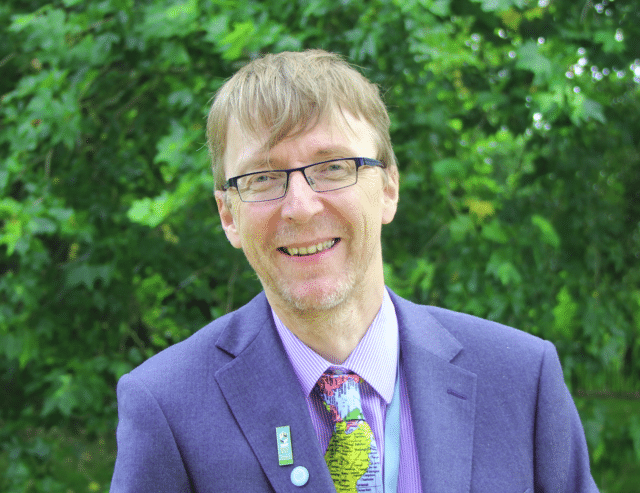Blog
Meeting the Challenges of Sustainability
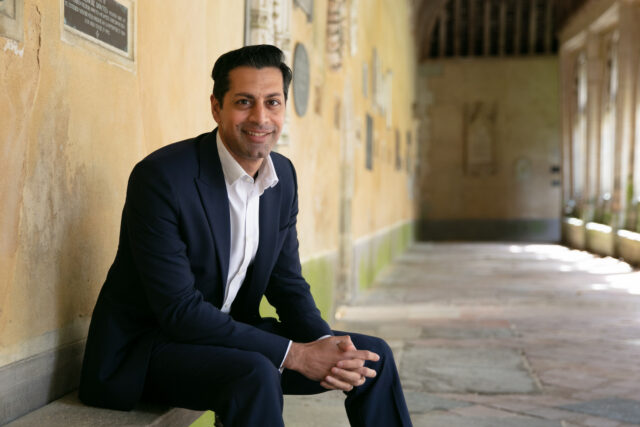
Paresh Thakrar
Bursar, Winchester College
Read the blog
On a typical crisp autumn day like today, the campus oozes beauty. Historic buildings and the ancient natural landscape provide a backdrop to the extraordinary array of school activities typical of the contemporary 24/7 boarding school. Whilst inspirational for would-be scholars, the campus – a blend of buildings from 14th century to Victorian and 20th century adaptations – is a mixed blessing in terms of sustainability.
With around 40% of the College’s emissions coming from heating and lighting our buildings carry the greatest potential for improvements in sustainability. To be effective, any aspirations to carbon neutrality and ultimately net zero must take a whole-of-campus look at our environmental impact.
The future
Developments in buildings technology, materials and construction techniques provide opportunities to drive sustainability beyond what was possible even a few years ago. Official building standards provide a baseline of minimum sustainable measures; however, voluntary accreditation to standards, such as BREEAM (Building Research Establishment Environmental Assessment Measure), WELL or LEED can take both sustainability and, importantly, comfort and quality of life to exceptional levels.
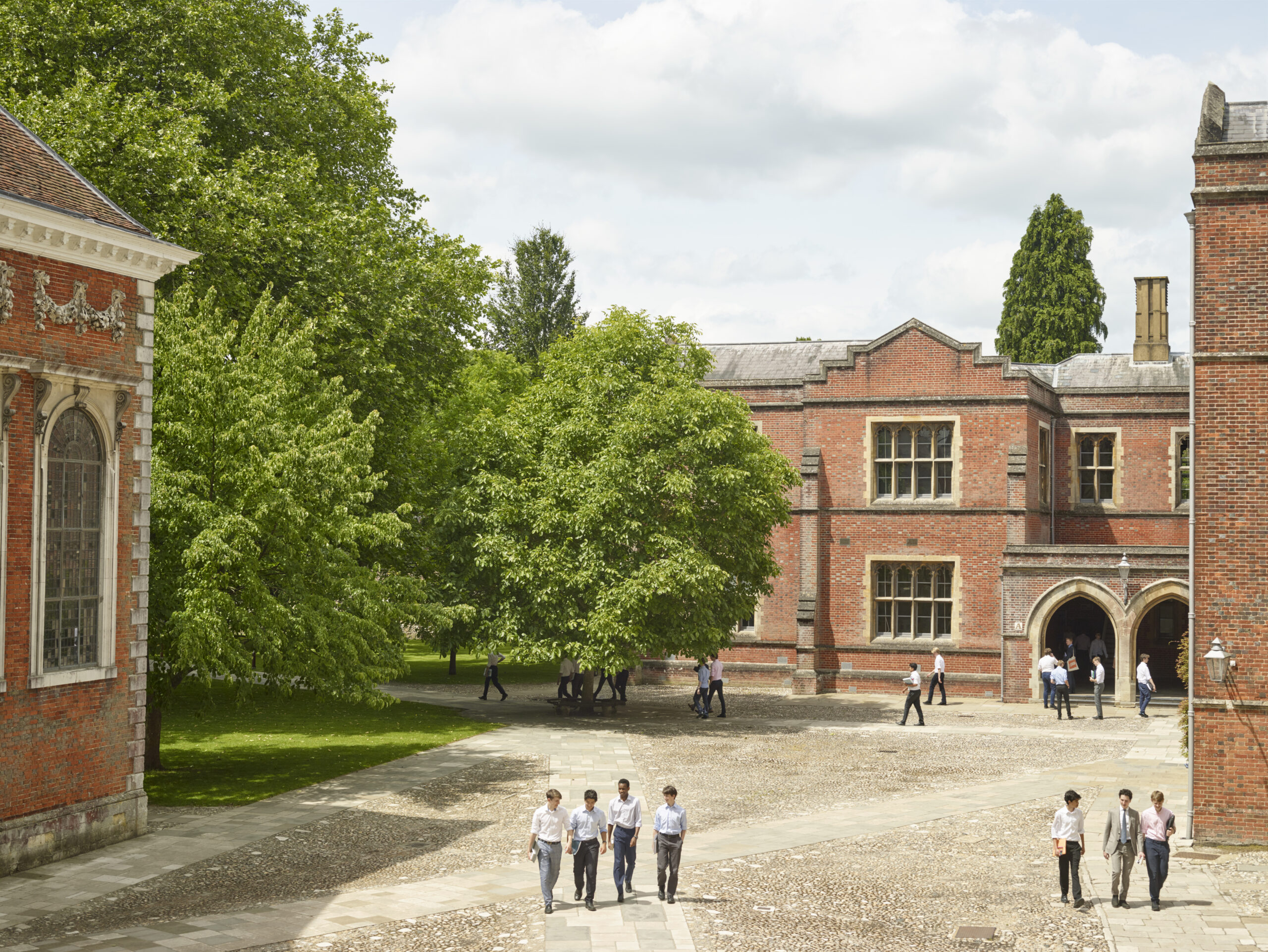
Historic, listed buildings sit alongside extensive green spaces across the entire Winchester College campus
The College’s two major new build schemes both rely heavily on external standards to drive sustainability. The new Sports Centre will be a BREEAM ‘Excellent’ building – an environmental standard achieved by only 10% of new builds. The standard is holistic – it captures the benefits of biodiversity, low impact design, as well as carbon and energy efficiency. In practice, this means:
- Solar panels that are expected to generate 60MWh per annum;
- Heat recovery and “free” cooling from waste heat from swimming pool backwash;
- Highly insulated building fabric;
- Daylit sports hall – reducing artificial lighting usage;
- Mixed natural ventilation and mechanical ventilation, with heat recovery, to optimise energy performance;
- Low energy lighting and lighting controls throughout; and,
- Metered energy use, providing users with feedback for optimisation.
The College is also in the process of planning for two new boarding houses. From inception, these have been designed according to Passivhaus principles and entirely gas-free. Passivhaus focuses on energy conservation through insulation, glazing and air tightness. As a result, the new boarding houses will consume just 45% of the energy per square meter of an existing boarding house.
The past
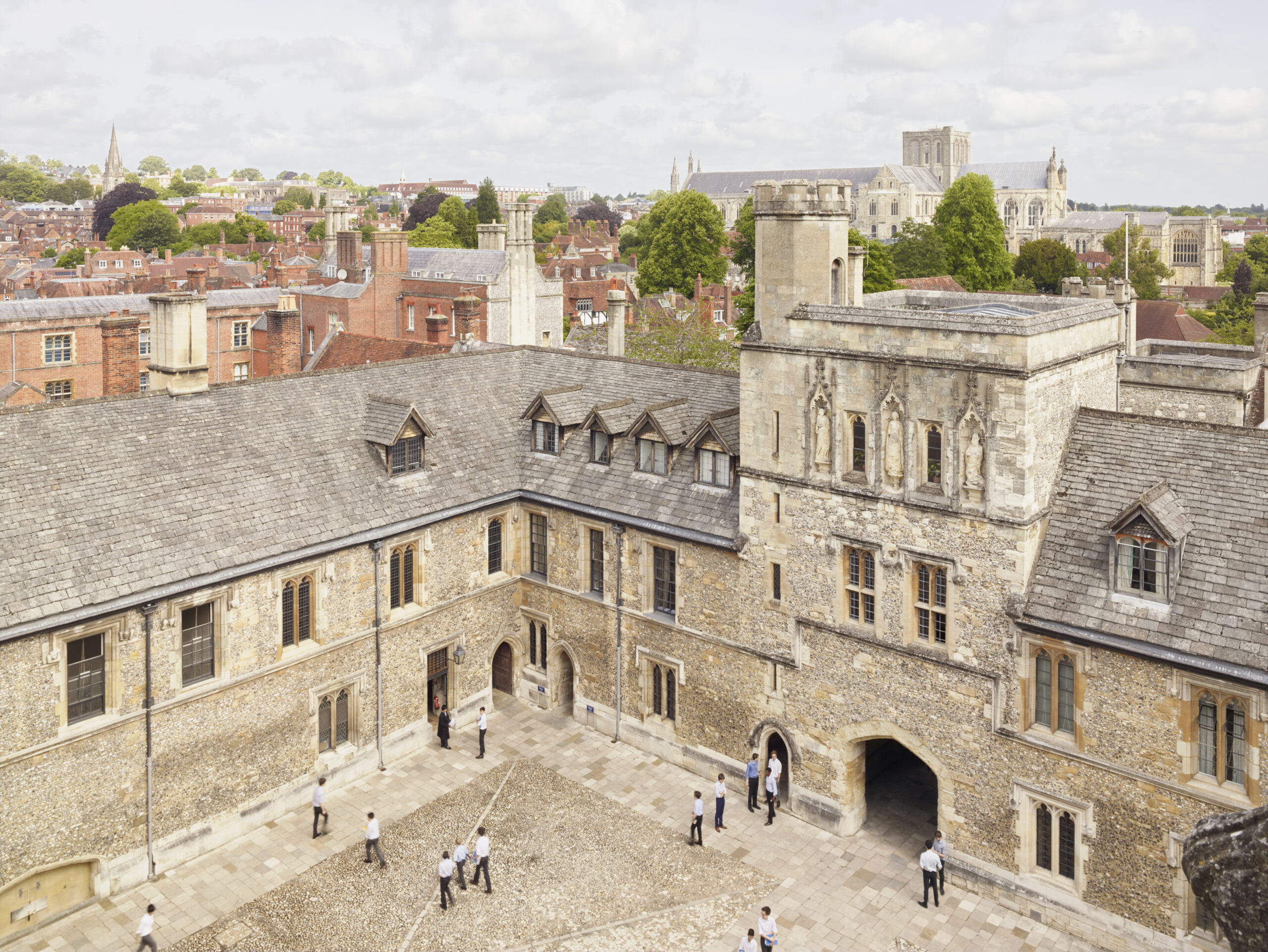
The medieval heart of the school, College, where 70 scholars still live and study
The historic campus presents different issues. There are tensions between the rules that protect historic and listed buildings and the opportunities available to make those buildings more sustainable and durable in the long term. In the short term, we work to sympathetically improve insultation, lighting and fabric in both residential and teaching accommodation. Clever retrofitting to boarding houses has in some cases reduced gas consumption by 60% and electricity by 20%. These seemingly prosaic changes are the necessary precursor to eliminating gas boilers; ultimately opening up the potential for campus-wide ground-source and localised air source heat pumps.
Natural capital
With an endowment rich in rural land, the final piece of the puzzle has been for the College to think seriously about habitats and biodiversity across the estate. We’re starting to do this in multiple ways; in the context of creating a campus rich in wild animal and plant life, ensuring construction projects go hand in hand with enhanced biodiversity and being good stewards of our agricultural estate. This involves both working with our farming tenants as stewards of the land and seeking opportunities to deploy land strategically for environmental benefit. This final aspect is an evolving area of our thinking, as we consider the potential to use more of our land for renewable energy (e.g. solar energy production) or as carbon sinks or nitrate offsets.
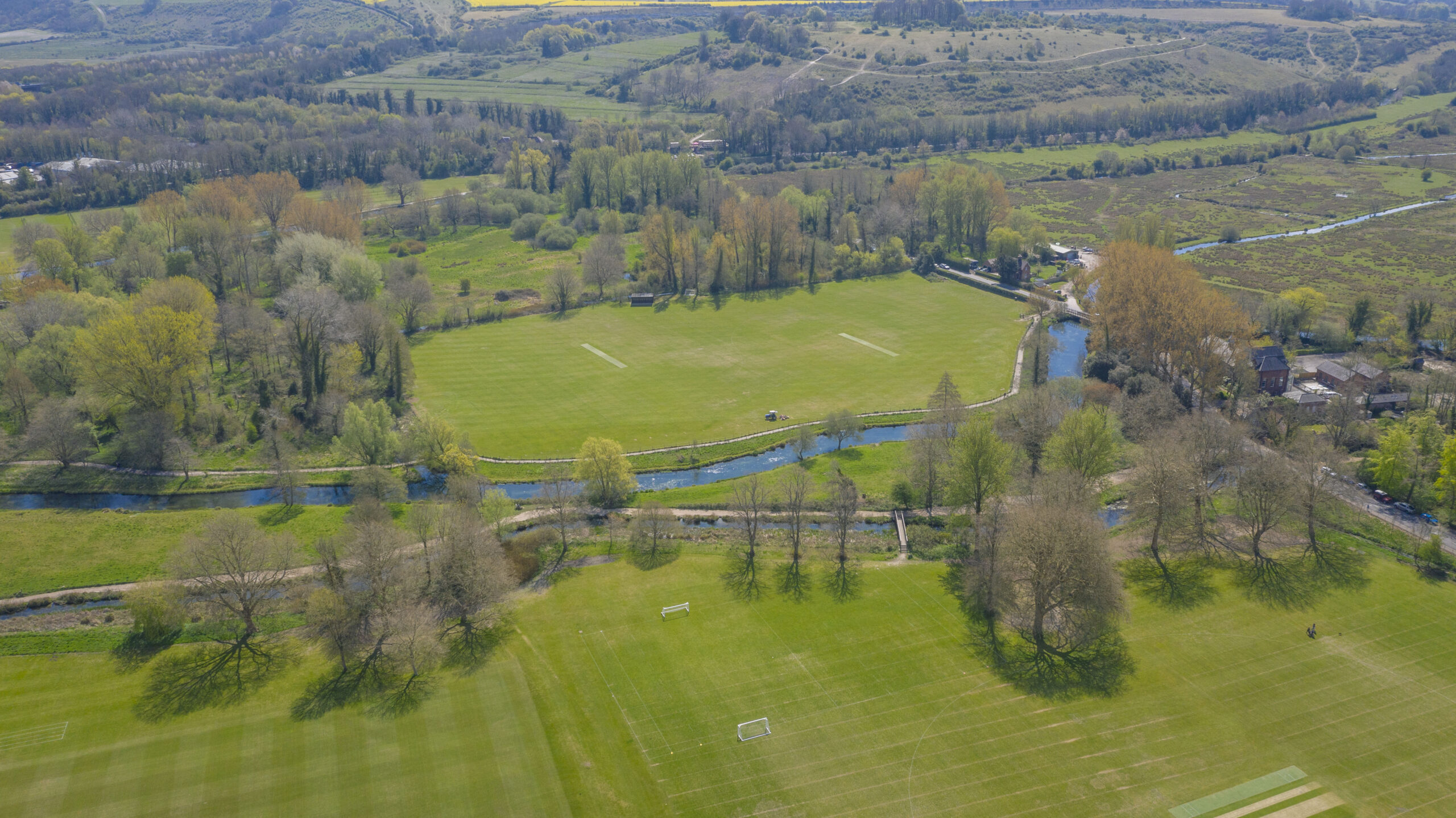
Ariel view of Winchester College playing fields, nature reserve and chalk stream, towards St Catherine’s Hill, which is also owned by the College but fully accessible to the public
Historically our pupils have always been interested in the environment – the Natural History Society was established in 1870 – but seeking ways to care for and protect the natural world has become an ever-greater priority for them. Our young people are challenging us to respond to the climate emergency, whether that’s through wilding the campus or setting ambitious targets. This engagement, coupled with external standards and full strategic commitment from across our leadership, is enabling us increase momentum, tackle some of the biggest challenges, and deliver a more sustainable school.
Related articles
-
Blogs
Taking Eco Action -
Case Studies
Sustainability at St Helen’s -
Case Studies
Protest has turned to action at Putney High School -
Case Studies
Changing the environment - A school in transition

